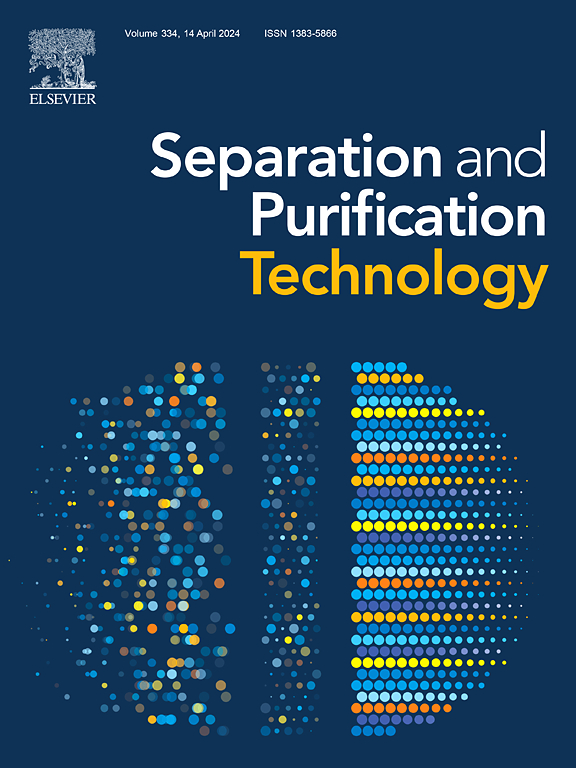In-situ selective extracting lithium from waste LiFePO4 cathode by gas–solid oxidative deintercalation
IF 8.1
1区 工程技术
Q1 ENGINEERING, CHEMICAL
引用次数: 0
Abstract
The surging number of waste lithium-ion batteries has brought great challenges to the recycling industry, and the efficient and low-cost extraction of valuable components in waste lithium-ion batteries is meaningful. In this study, a gas–solid oxidative deintercalation method is proposed to efficiently extract lithium from spent lithium iron phosphate (LFP) batteries. Specifically, chlorine was utilized to oxidize Fe(II) in the LFP to Fe(III), thereby resulting in the release of lithium ions from the LFP lattice. Sequentially, the deintercalation lithium ions react with in-situ chloride ions to form lithium chloride that is easily extracted by water leaching. The results show that the gas–solid oxidative deintercalation accompanies strong exotherm, which can occur rapidly at normal temperature. After oxidative deintercalation (25 °C for 20 min) – water leaching (30 °C for 30 min), the leaching efficiency of lithium was 98.57 %, while the leaching efficiencies of iron, phosphorus, and aluminium were less than 1.5 %. Meanwhile, the main component in the leaching residue is FePO4 with stable crystal structure, which can be used for the re-generation of LFP batteries. The regenerated LFP cathode material demonstrates a spherical morphology, with an initial discharge capacity of 153.34 mAh g−1 at 0.1 C. Compared with the traditional lithium recycling process, this novel process presents remarkable advantages in production cost and efficiency. Overall, these findings provide a new insight for the recycling of waste lithium-ion batteries.


求助全文
约1分钟内获得全文
求助全文
来源期刊

Separation and Purification Technology
工程技术-工程:化工
CiteScore
14.00
自引率
12.80%
发文量
2347
审稿时长
43 days
期刊介绍:
Separation and Purification Technology is a premier journal committed to sharing innovative methods for separation and purification in chemical and environmental engineering, encompassing both homogeneous solutions and heterogeneous mixtures. Our scope includes the separation and/or purification of liquids, vapors, and gases, as well as carbon capture and separation techniques. However, it's important to note that methods solely intended for analytical purposes are not within the scope of the journal. Additionally, disciplines such as soil science, polymer science, and metallurgy fall outside the purview of Separation and Purification Technology. Join us in advancing the field of separation and purification methods for sustainable solutions in chemical and environmental engineering.
 求助内容:
求助内容: 应助结果提醒方式:
应助结果提醒方式:


